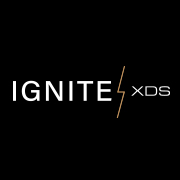Recognition. Resonance. Relationship.
Every entrepreneur, business owner, CEO, or marketer needs to understand something about branding...If you have found yourself spending money on marketing campaigns with marginal return, or hiring designers and web agencies who do great work but take a long time to understand who your company is and what it’s about, you might have a branding blind spot.
Let’s start by setting the stage and providing some historical context that will help us understand and relate better to the terms discussed in this article.First, let’s look at the word Brand and make sure we’re all on the same page for the rest of this post.
Etymology tells us:
“The word, brand, derives from the ancient North Scandinavian term “brandr” meaning “to burn.” It is a reference to the practice of using branding irons to burn a mark into the hides of livestock, and may also refer to the practice of craftsmen engraving brand names into products, tools or personal belongings.” wikipedia.org
A modern definition:
“A brand is a name, term, design, symbol, or any other feature that identifies one seller’s goods or service as distinct from those of other sellers.” - American Marketing Association
So, we know a Brand has to do with identity and communicating ownership. Is that all there is to know?
Definitely not, however, this is a good starting point. These definitions bring simple perspective to what we know about about brand marketing today. We know that we have to do a good job exploring and creating opportunities to “MAKE A MARK” that communicates ownership and establishes identity. Although, anyone who has been involved with establishing or building a brand also knows that doing so is not so simple. Which, as we said above, may result in a branding blind spot.
So, what’s next? How do you avoid that blind spot? Think of a brand as having 3 pillars, 3 core elements, without which the recognition and resonance of an organization falters.
Visual (Recognition)
Let’s start with what is usually the most obvious. The visuals. Visuals are the logos, symbols, marks, photos/imagery, colors, and any other visible aspect that represents and supports the identity of an entity. Visual brand language is the unique “alphabet” of design elements - such as shape, color, materials, finish, typography and composition. These elements directly and subliminally communicate a company’s values and personality through compelling imagery and design style.
This is why this stage of developing a brand should not be rushed, and requires deep consideration of the Brand’s WHY – you want the brand elements to communicate that WHY subliminally, through visuals, so the user subconsciously (i.e. emotionally) recognizes your brand and message.
Personality (Resonance)
Brand personality is a set of human characteristics that are attributed to a brand name, and is something to which the consumer can relate. An effective brand personality can increase brand equity through the consistent set of traits that a specific consumer segment enjoys. This framework of characteristics that appeal to and serve the target consumer, can help a company or organization shape the way people feel about its product, service, or mission. It’s not enough to just have recognition. We have to anticipate the needs of our potential customers and actually value what they value in order to build successful brand.
Emotion (Relationship)
Most importantly, an emotional bond must be developed between the consumer and the brand for an organization to be successful. Above we mentioned that we must affect the consumer subconsciously, this is because humans make decisions emotionally. Yes, today’s consumers have limitless information available at their fingertips, however their initial reaction to a brand is emotional. After that initial emotional interaction, the consumer will spend time rationalizing their feelings and decision with research and facts, but it’s the initial emotional reaction that triggers action.
The emotional value proposition of your brand is the difference between someone buying your product once or someone buying only your products for a lifetime. The emotional bond that develops between consumers and brands cuts through the logic to emotionally engage on a very deep and personal level, and it’s what sets companies apart from the competition. So how do you create that relationship?
In short, through your WHY!
Our message here, that we’re always communicating to our clients, is that Branding is more than just a logo or a few pieces of visual content. It’s how those pieces are used to communicate ownership and identity, and how they can relate to your potential customer to encourage loyalty and trust that results in a relationship. Your visual language and brand identity is an incredibly important part of the process in growing recognition, gaining resonance, and cultivating relationships with consumers who will look forward to interacting with your brand.
Ready to
Transform
your Business?
Ignite XDS
Ignite XDS practices a form of operational marketing whereby we believe every facet of your business has an effect on the customer experience your company delivers. We recognize that marketing cannot be conducted in a silo, but rather requires a holistic approach that is woven throughout the organization.
